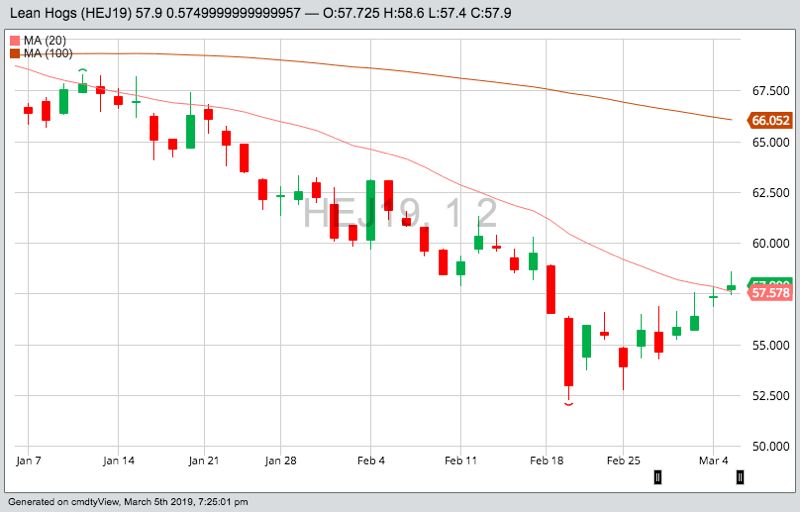Chicago | Reuters — U.S. lean hog futures jumped to two-week highs on Tuesday amid hopes for increased pork prices, which have been under pressure from large supplies and weakened demand from China.
Wholesale pork prices, known as the cutout, rose by $1.01 on Monday to $62.93/cwt for carcasses, according to U.S. Department of Agriculture data (all figures US$). On Tuesday, prices retreated slightly to $62.59, although that was still above the average of $61.50 for the last five days.
The gains were a turnaround after hog and pork prices slumped as farmers ramped up production and U.S. agricultural exports to China slowed. China last year imposed tariffs on imports of U.S. pork due to the trade war between Washington and Beijing.
Read Also

Alberta crop conditions improve: report
Varied precipitation and warm temperatures were generally beneficial for crop development across Alberta during the week ended July 8, according to the latest provincial crop report released July 11.
“The market was looking for a bottom in the cutout,” said Altin Kalo, agricultural economist for New Hampshire-based Steiner Consulting. “It thinks that it probably saw one.”
Chicago Mercantile Exchange April lean hogs rose 0.575 cent to 57.9 cents/lb. and reached its highest price since Feb. 19. The market has rebounded from a contract low of 52.25 cents, set Feb. 20.
The U.S. is working on a trade agreement with China, which could increase demand for agricultural products such as pork. But U.S. President Trump will reject a deal that is not perfect, U.S. Secretary of State Mike Pompeo said in a media interview.
Traders are monitoring the trade talks and also the spread of African swine fever in Asia.
The highly contagious disease, which is incurable in pigs but harmless to humans, has spread rapidly across China since August, and has been found in seven areas in Vietnam, the state-run Vietnam News Service reported.
In the cattle market, most-active CME April live cattle settled up 0.475 cent at 128.825 cents/lb. The contract has retreated from a high of 130.45 set on March 1.
Traders are reluctant to buy cattle futures aggressively because index funds are in the process of rolling positions from the nearby April contract into deferred month contracts, said Mike Sands, president of MBS Research.
However, cold U.S. weather continues to underpin the market, he said. Cattle typically do not put on weight as quickly in cold weather because they consume feed to generate body heat.
“That’s still going to show up in terms of further erosion in carcass weights,” Sands said.
CME March feeder cattle futures lost 0.325 cent to settle at 140.875 cents/lb.
— Tom Polansek reports on agriculture and ag commodities for Reuters from Chicago.



















